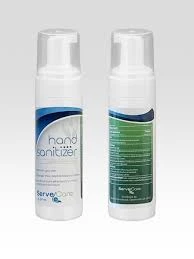Understanding the Applications and Benefits of Hydrolyzed Polyacrylamide in Various Industries
Hydrolyzed polyacrylamide (HPAM) is a synthetic polymer commonly used in various industrial and environmental applications due to its unique properties. It is derived from polyacrylamide (PAM) through a hydrolysis reaction, which transforms some of the amide groups into carboxyl groups, altering its solubility and reactivity. The introduction of hydrophilic groups enhances its capability to interact with water and other polar substances, making HPAM highly effective in a myriad of processes.
One of the primary applications of hydrolyzed polyacrylamide is in the field of water treatment. Due to its excellent flocculation properties, HPAM is employed in the clarification of water and wastewater, helping to remove suspended solids and other contaminants. By binding with particles and forming larger aggregates, HPAM facilitates their separation from water, ensuring cleaner and safer effluents. This property is particularly beneficial in industries such as mining, paper manufacturing, and municipal waste treatment, where effective solids-liquid separation is crucial.
In the oil and gas industry, hydrolyzed polyacrylamide serves as a crucial component in enhanced oil recovery (EOR) techniques. EOR methods aim to extract additional crude oil from reservoirs that would otherwise remain untapped. HPAM is used to increase the viscosity of water injected into oil wells, which helps improve the mobility of oil and enhances its extraction. Furthermore, by controlling the water flow in the reservoir, HPAM aids in the formation of a more uniform displacement front, maximizing recovery rates and operational efficiency.
In agriculture, HPAM has gained popularity as a soil conditioner. By improving soil structure, it enhances water retention, reduces erosion, and promotes better plant growth. When incorporated into the soil, hydrolyzed polyacrylamide reduces the surface tension of water, allowing for better infiltration and retention during irrigation. In arid and semi-arid regions, this property is especially valuable as it helps conserve water and minimizes the frequency of irrigation, ultimately promoting sustainable agricultural practices.
hydrolyzed polyacrylamide

In addition to its industrial applications, HPAM is also finding utility in the cosmetics and personal care sectors. Its ability to retain moisture makes it an ingredient in various skincare formulations, helping to ensure hydration and improving the texture of products. Moreover, HPAM is used in hair care products as a conditioning agent, enhancing shine and manageability.
However, despite its numerous benefits, the use of hydrolyzed polyacrylamide does raise environmental concerns. The degradation of HPAM in aquatic environments and its potential effects on aquatic life are subjects of ongoing research. Sustainable practices and alternative biodegradable polymers are being explored to mitigate these impacts.
In summary, hydrolyzed polyacrylamide is a versatile polymer with a wide range of applications across various industries, from water treatment and oil recovery to agriculture and personal care. While it offers significant benefits in enhancing efficiency and performance, it is crucial to consider the environmental implications of its use. Continuous advancements in polymer science may provide solutions that balance industrial needs with environmental stewardship, paving the way for sustainable practices in the future.
-
Water Treatment with Flocculant Water TreatmentNewsJun.12,2025
-
Polymaleic AnhydrideNewsJun.12,2025
-
Polyaspartic AcidNewsJun.12,2025
-
Enhance Industrial Processes with IsothiazolinonesNewsJun.12,2025
-
Enhance Industrial Processes with PBTCA SolutionsNewsJun.12,2025
-
Dodecyldimethylbenzylammonium Chloride SolutionsNewsJun.12,2025





